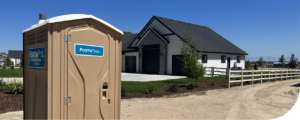
Cracks in walls and ceilings can arise for several reasons, ranging from shifting foundations to natural wear and tear over time. While some minor cracks can be ignored, others may require immediate attention to prevent further damage. To help you determine the best course of action, we’ve compiled a list of tips for dealing with cracks in walls and ceilings.
Assess the Severity of the Crack:
The first step in dealing with a crack in a wall or ceiling is assessing the severity. Minor cracks are typically nothing to worry about and may even be a sign of normal age-related wear and tear. However, if the crack is wider than a quarter of an inch or runs horizontally across a wall or ceiling, it may be an indication of a more serious problem.
Check for Environmental Factors:
Another factor to consider when assessing the severity of a crack is the environment. Cracks that are caused by environmental factors such as extreme temperatures, humidity levels, or moisture intrusion should be taken seriously and addressed promptly.
Inspect the Structural Integrity of the Space:
If the crack appears to be serious, you should inspect the structural integrity of the space. Look for any signs of shifting, sagging, or warping in the walls or ceiling. If the crack appears to be the result of a structural issue, it’s best to contact a professional for an assessment.
Consider the Age of the Structure:
In addition to the environmental factors and structural integrity of the space, you should also consider the age of the structure. Older homes and buildings are more likely to have cracks due to natural wear and tear. If the structure is older and the crack appears to be age-related, it may not require immediate attention. cracks in walls and ceilings when to worry If the cracks are wide, deep, or jagged, or if they appear in multiple locations, you should have them inspected by a professional.
Determine the Source of the Crack:
Once you’ve assessed the severity of the crack and inspected the structural integrity of the space, you should determine the source of the crack. This may require further investigation, such as an inspection of the foundation or an analysis of the walls and ceilings.
Consider Repair or Replacement Options:
Once you’ve identified the source of the crack, you should consider repair or replacement options. Minor cracks can often be repaired with caulk or spackle, while more serious cracks may require professional repair or replacement.
Address the Underlying Issue:
In addition to repairing or replacing the cracked area, you should also address the underlying issue. For example, if the crack is a result of shifting foundations, you’ll need to take steps to stabilize the foundation before proceeding with repairs or replacement.
Call a Professional for Assistance:
If you’re not sure how to address the crack or the underlying issue, it’s best to call a professional for assistance. A licensed contractor or home inspector can help you identify the source of the crack and determine the best course of action.







